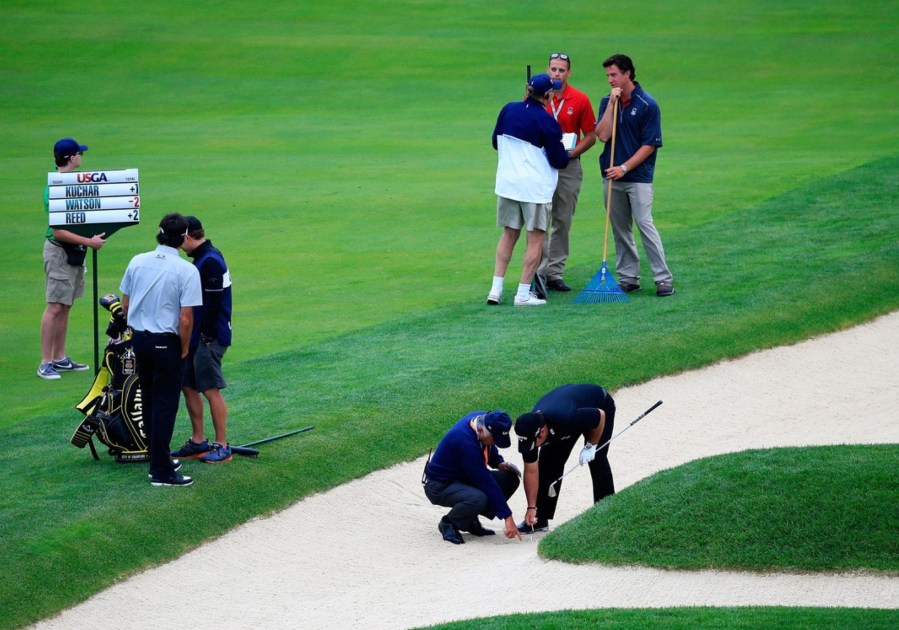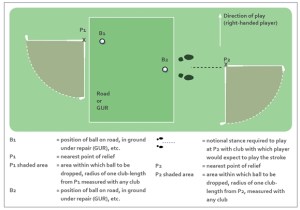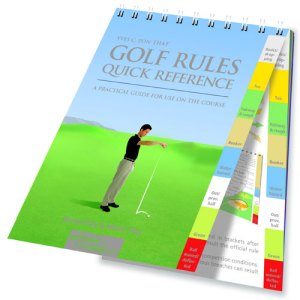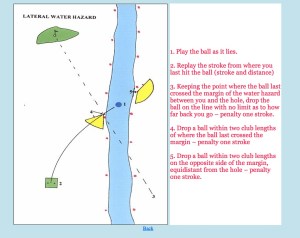It seems that many golfers are confused as to whether objects on the course are loose impediments or movable obstructions. This is an important distinction to make, as there are a number of relevant Rules where players could incur penalties if they get it wrong.
In fact, in most cases, the distinction should be easy enough. Loose Impediments are natural objects and movable obstructions are anything artificial that can be moved without unreasonable effort. Here is a sample list of some of the items that may be encountered on the golf course during a round;
|
|
|
|
Loose Impediments
(natural)
|
Movable Obstruction (artificial)
|
|
stones
|
bunker rakes
|
|
leaves
|
other players’ golf clubs
|
|
branches and twigs
|
stakes (except out of bounds)
|
|
pine cones
|
signage and ropes
|
|
dung and droppings
|
bottles and cans
|
|
insects
|
score cards
|
|
worms and their casts
|
pens and pencils
|
|
spiders and their webs
|
paper, tissues
|
|
half-eaten fruit
|
plastic bags
|
|
fruit skins
|
packets and boxes
|
|
ant hills
|
toys
|
|
dead birds and animals
|
match sticks or cigarettes
|
|
aeration plugs
|
abandoned balls
|
|
clods of earth
|
loose stones from a wall
|
|
gravel
|
wood manufactured into planks
|
|
crushed shells
|
cables
|
|
wood chips
|
doors or windows
|
|
|
|
Be aware, that under the Rules sand and loose soil are loose impediments on the putting green, but not elsewhere; snow and natural ice, other than frost, are either casual water or loose impediments, at the option of the player; and dew and frost are not loose impediments.
Some loose impediments may be transformed into obstructions through processes of construction or manufacturing. For example, a log (loose impediment) that has been split and has legs attached has been changed by construction into a bench (obstruction), or a piece of wood (loose impediment) becomes an obstruction when manufactured into a charcoal briquette. Also, there may be loose impediments that when placed together make up an obstruction. An example of this would be a manufactured path (immovable obstruction) made of wood chips. If a player’s ball lies on such a path and he chooses not to take relief then he may move any of the wood chips before making his stroke, providing that he does not move his ball in doing so,
Except when both the loose impediment and the ball lie in, or touch, the same bunker or water hazard, any loose impediment may be moved. But if the player causes their ball to move while removing the loose impediment, they are penalised one stroke and the ball must be replaced, unless the ball is on the putting green when there is no penalty.
Movable obstructions can be removed anywhere on the course, including when the ball lies in a hazard, and there is no penalty if the ball moves during the removal, but again it must be replaced where it was before it was moved. If the ball lies in or on the obstruction, the ball may be lifted and the obstruction removed. The ball must then be dropped, or on the putting green placed, as near as possible to the spot directly under the place where the ball lay in or on the obstruction, not nearer the hole.

As already mentioned, if a player’s ball lies in a bunker they are not permitted to remove any loose impediment from that bunker. (The above photo illustrates this well – my ball was lying on a leaf in the bunker and had to be played as it lay.) However, very often there will be a Local Rule that says, “Stones in bunkers are movable obstructions”, because it is considered that the stones could represent a danger to players if they are hit during a stroke. This is a good illustration of why it is so important to read the Local Rules before commencing a round on an unfamiliar course. Whilst on the subject of bunkers, if a player cannot find their ball in a bunker because it is covered by sand, leaves or other loose impediments, they are permitted to probe or rake with a club or otherwise, as many loose impediments, or as much sand, as will enable them to see a part of their ball. When making a stroke out of a bunker, or water hazard, the player may not touch any loose impediment in that hazard before making their stroke, which commences with the downswing. So, for example, if a player brushes leaves in a bunker during their practice stroke or backswing they incur a penalty of two strokes in stroke play, or loss of hole in match play.









